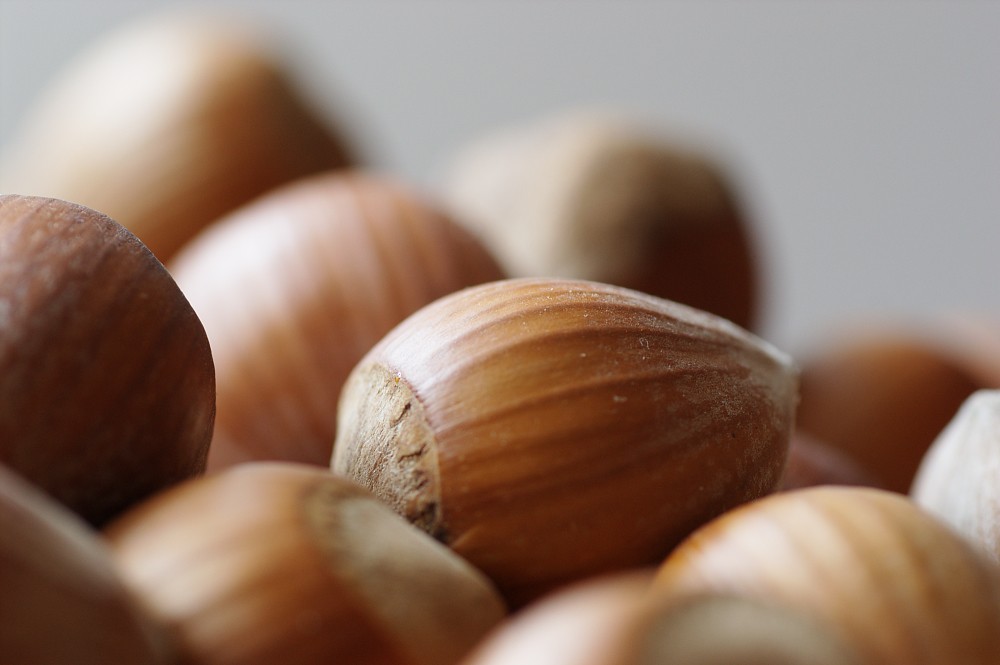Hazelnuts have been prized for their robust, nutty flavour and adaptability in baking and cuisine for generations. But did you know that hazelnuts have a distinct chocolate flavour as well? Many people have described hazelnuts as having a flavor that is reminiscent of chocolate, and this has led to the popularity of hazelnut-chocolate combinations in treats like Nutella and Ferrero Rocher chocolates. Why do hazelnuts, though, have a chocolate flavour? Is this distinct flavour profile supported by science?
Hazelnuts have a distinctive flavour that is rich, nutty, and just a little bit sweet. But a substance called methylxanthines, specifically theobromine, is what gives them a chocolate flavour as well. The bitter flavour of chocolate is a result of theobromine, an alkaloid that is present in cacao beans. It’s interesting to note that theobromine may also be found in hazelnuts, albeit in considerably lower concentrations than in cacao beans.
However, other substances besides theobromine also contribute to the chocolatey flavour of hazelnuts. Hazelnuts also contain substances called pyrazines, which give many foods, like coffee and chocolate, their nutty and earthy flavours. Hazelnuts’ pyrazines and theobromine mix to provide a flavour profile that is complex and evocative of chocolate.
The roasting procedure is another element that gives hazelnuts their chocolatey flavour. Heat-induced chemical reactions during hazelnut roasting result in a variety of different flavours and fragrances. Compounds that give the nuts a more chocolate-like flavour can also be produced by these processes.
In conclusion, a number of elements, including theobromine, pyrazines, and roasting, contribute to the hazelnuts’ chocolatey flavour. Due to their natural love for one another, hazelnuts and chocolate are frequently mixed in desserts and other sweets. Take a moment to appreciate its distinct flavour and the science behind it the next time you munch a hazelnut.

Is Nutella basically chocolate?
Popular hazelnut and chocolate spread known as Nutella is frequently used as a filling or topping for pastries, toast, and other snacks. Although chocolate is a component of Nutella, it is not the same as pure chocolate.
Sugar, olive oil, hazelnuts, and cocoa powder are the main components of Nutella. The chocolate flavour of Nutella is derived from the cocoa powder, which is also processed together with other ingredients to generate the spreadable consistency. Dark chocolate typically has at least 70% cocoa solids, compared to about 13% in Nutella.
Furthermore, Nutella contains a lot more sugar than chocolate. Nutella contains about 57% sugar while dark chocolate normally has about 30%. This indicates that Nutella has a very different flavour profile from chocolate and is significantly sweeter.
In conclusion, Nutella differs from pure chocolate in several ways. Despite the fact that it contains cocoa powder and tastes chocolaty, other components like sugar and vegetable oil give it a unique flavour and texture.

What other foods or flavors share similarities with hazelnuts?
Hazelnuts have a distinctive flavour that has been characterised as being nutty, slightly sweet, and occasionally having a trace of chocolate. Other foods or flavours that are comparable to hazelnuts include the following:
- Almonds: Almonds have a nutty flavour and a crunchy texture, similar to hazelnuts. Both baking and cooking frequently employ them in similar ways.
- Pecans: Although they have a somewhat distinct flavour profile than hazelnuts, pecans are similar to them in terms of sweetness and texture.
- Walnuts: Although they taste more bitter than hazelnuts, walnuts nonetheless have a nutty flavour and can be utilised in comparable ways.
- Nutella: A common hazelnut-based spread with a sweet, chocolaty flavour, Nutella is quite popular. Desserts frequently have it as a topping or filling.
- Coffee: Hazelnut-flavored coffee is a well-liked brew with a flavour that is frequently described as nutty and slightly sweet.
- Chocolate: Due to theobromine’s presence in both, as was indicated in the preceding response, hazelnuts and chocolate have some flavour in common.
- Hazelnuts and caramel are frequently combined in desserts and confections because of their comparable sweetness.
- Vanilla: Vanilla has a flavour that is comparable to hazelnuts in that it is sweet and slightly nutty. It is frequently used as a flavouring in baked products and sweets.
Hazelnuts are a versatile and delectable component in many cuisines because of their distinctive flavour, which can be matched with a range of various foods and flavours.

Can people with nut allergies consume hazelnuts?
Hazelnuts may cause an allergic reaction in people with nut allergies, among other nuts. Hazelnuts are not regarded as one of the “big eight” allergens (milk, egg, peanut, tree nuts, soy, wheat, fish, and shellfish) that make up the majority of food allergies. Nevertheless, some people may still experience allergic reactions to them.
If you have a nut allergy, it is important to speak with your doctor or allergist to determine whether you are allergic to hazelnuts or any other nuts. In general, hazelnuts and any items that include them should not be consumed by persons who have nut allergies.
Numerous foods contain hazelnuts, such as chocolate, baked goods, and nut spreads. It’s critical to carefully read food labels and steer clear of any items that either contain hazelnuts or were manufactured in a facility that also processes hazelnuts.
In conclusion, hazelnuts may cause allergies in persons with nut allergies, thus they should stay away from them. Consult your doctor or allergist for advice on which foods to avoid and how to treat your allergy if you have a nut allergy.
Relevant Articles
Salmon Vs Tuna Taste: What Is The Difference?

Comments are closed